
Ready to challenge your middle school students with analogies that go beyond simple synonyms and antonyms? This blog post shares five engaging activities that explore a variety of word relationships—perfect for grades 6–8.
Each activity is designed to deepen vocabulary knowledge, boost critical thinking, and enhance students’ understanding of analogies using relationships like part to whole, cause and effect, and item to category.
📥 Grab the Handout – It includes analogy charts, practice pages, and everything needed for the activities.
Common Core State Standards
These activities align with the following Common Core State Standards:
- L.6.5.b Use the relationship between particular words (e.g., cause/effect, part/whole, item/category) to better understand each of the words.
- L.7.5.b Use the relationship between particular words (e.g., synonym/antonym, analogy) to better understand each of the words.
Analogy Activities for Middle Schoolers
Activity 1: Picture Analogies
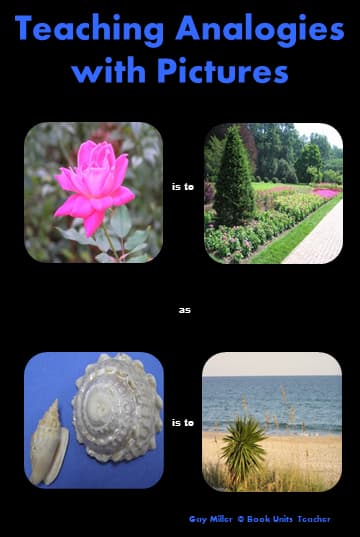
Picture analogies are a fun and visual way to introduce the concept of analogies to your students.
For example, hammer : nails :: screwdriver : screws is an analogy that illustrates the relationship between a tool and its object.
You can find pictures to print using online sites such as Unsplash. Each card has a picture of something, such as an animal, a vehicle, food, or a season. You will need enough cards for each student in your class to have one.
Picture Examples
hammer: nails :: screwdriver : screws (tool)
ice : fire :: city : country (antonyms)
Model T : Corvette :: baby : adult (age)
day : night :: winter : summer (times)
collie : dog :: motorcycle : vehicle (classification)
wet floor : fall :: texting while driving : car crash (cause/effect)
study : good grades :: tickle : laugh (action/result)
Full instructions for completing this activity are found in the handout.
Activity 2: Using Technology to Teach Analogies
Try this interactive Hex game that challenges students to connect word relationships across a digital board. Each hexagon hides an analogy question – like dog is to bark as cat is to meow – and players earn their color by answering correctly.
Looking for a way to bring analogies to life with movement, strategy, and a splash of competition? It’s a perfect blend of logic and gameplay, ideal for centers, early finishers, or whole-class review. You can explore the game [here] and see how technology can turn abstract thinking into active learning.
Check out these YouTube links if you prefer your students to watch videos to learn about analogies.
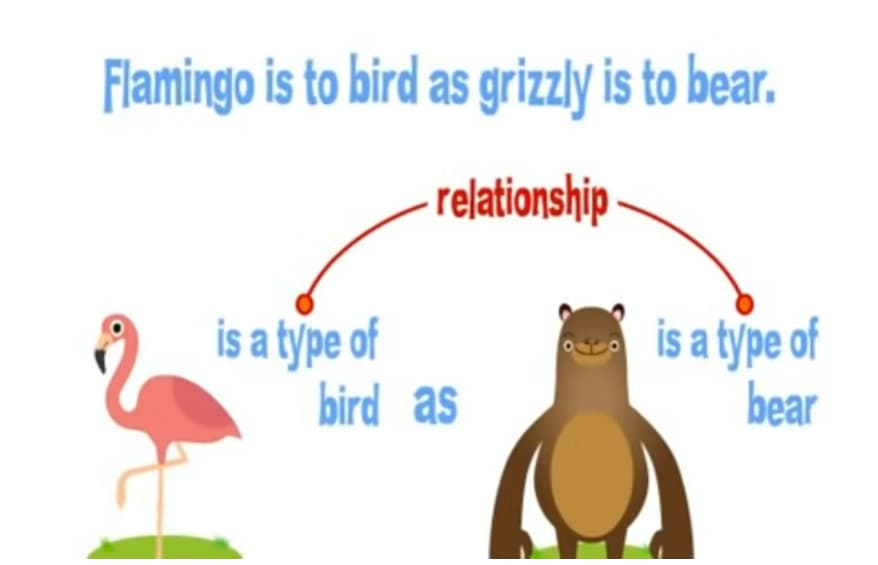
Analogy Lesson: [1:54] This video is a short and straightforward introduction to analogies. It shows some examples of analogies using pictures and words and explains how to find the missing word in an analogy. It also links to online games you can play to practice analogies.
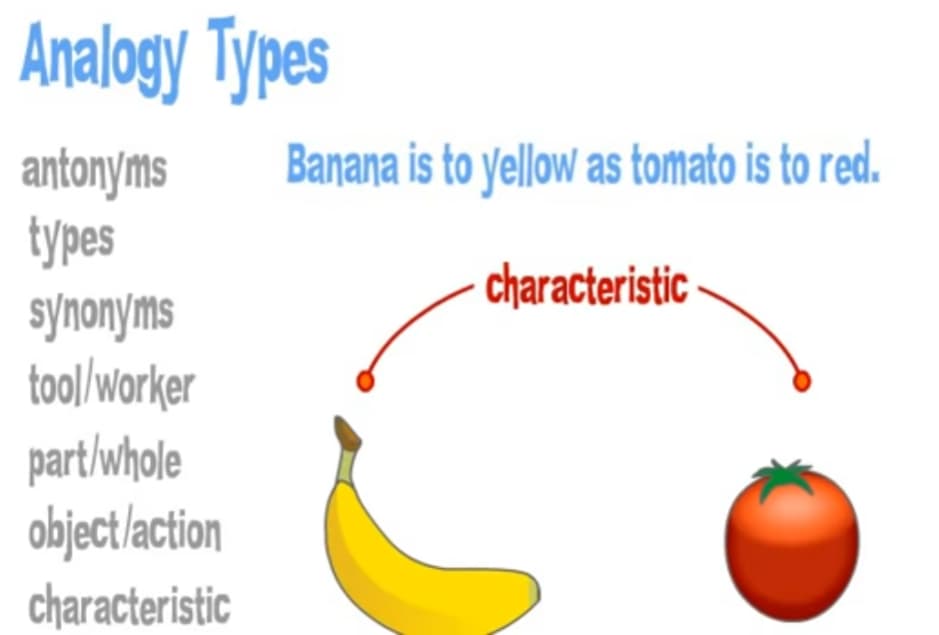
Analogy Types: [1:00] This short video continues where the last video ended. It goes over several word relationships.
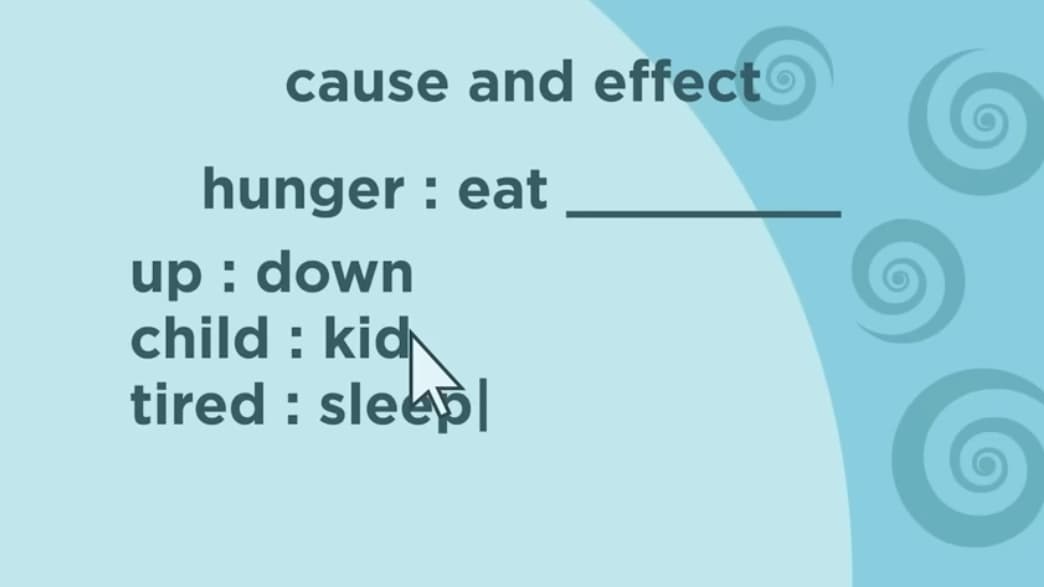
Analogies [6:39]
This video is a fun and catchy song that teaches students about analogies. It explains analogies, how to use them, and why they are important. It also gives examples of analogies using different word relationships, such as synonyms, antonyms, part to whole, cause and effect, and function and object.
The video also has some colorful animations and illustrations that show the analogies in action. The video is suitable for students of all ages who want to learn about analogies in a fun and engaging way.
Activity 3: Foldable Organizers for Word Relationships
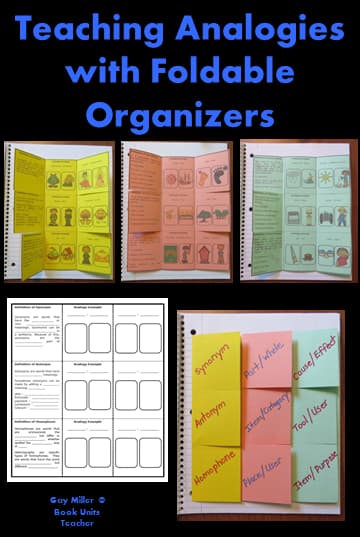
One of the skills that students need to master analogies is recognizing different types of word relationships. Word relationships are how words are connected or related to each other, such as synonyms, antonyms, part to whole, cause and effect, and function and object.
For example, in the analogy hammer : nails :: screwdriver : screws, the word relationship is tool and object.
These foldable organizers are included in the handout.
Activity 4: Round About Game for Analogy Practice

Round About is a fun game that helps your students practice analogies using synonyms and antonyms.
You must print out one set of analogy cards and a recording sheet for each student from the handout for this game. Cut the analogy cards apart before gameplay.
To play the game, follow these steps:
- Give each student a recording sheet. Tape an analogy card with a word on each student’s back. Instead of tape, I like to use lanyards. Students hang these around their necks so the information pocket hangs down their backs. It is easy to slip the word cards into the pockets of the lanyards for this activity.
- On the recording sheet, students have a list of analogies with the final word missing. To play the game, students walk around the room, looking for a word to complete each analogy. For example, if they see fast on someone’s card, they know this will complete the analogy – soft : loud :: slow : __________.
- When an answer is spotted, students write it next to the corresponding number on their recording sheet. They can only write down the word if they find it on someone’s card. They cannot use their own words or guess.
- Students continue this activity, completing as many analogies as possible until the timer goes off.
Activity 5: Analogy Activities on the Web
If you want to explore more analogy activities online, you can check out these websites I found. These websites have different types of analogy games, worksheets, and lessons that you can use to practice and improve your analogy skills. These websites are suitable for 6th and 7th graders who want to challenge themselves with varying difficulty levels and word relationships.
- Analogy Games for Kids: This website has a collection of online games to practice analogies. You can choose from categories, such as synonyms, antonyms, part to whole, and cause and effect. You can also adjust the difficulty level and the time limit. You will get instant feedback and a score for each game.
- Analogy Worksheets: This website has a variety of printable worksheets that you can use to practice analogies. You can download the worksheets for free, which include answer keys. The worksheets cover several word relationships and have different difficulty levels, from easy to challenging.
- Free Word Analogies Grades 7-10: This website has a free printable worksheet that you can use to practice analogies. The worksheet has 20 analogy questions that cover a wide range of word relationships. The worksheet also includes an answer key and explanations for each question.
Download the Handout
Everything you need—sorting cards, analogy charts, prompt pages, and activity templates—is included in the downloadable resource.
Analogies are a powerful way to improve students’ vocabulary, critical thinking, and creativity skills. They can also make learning fun and engaging using humor, imagery, and poetry.



